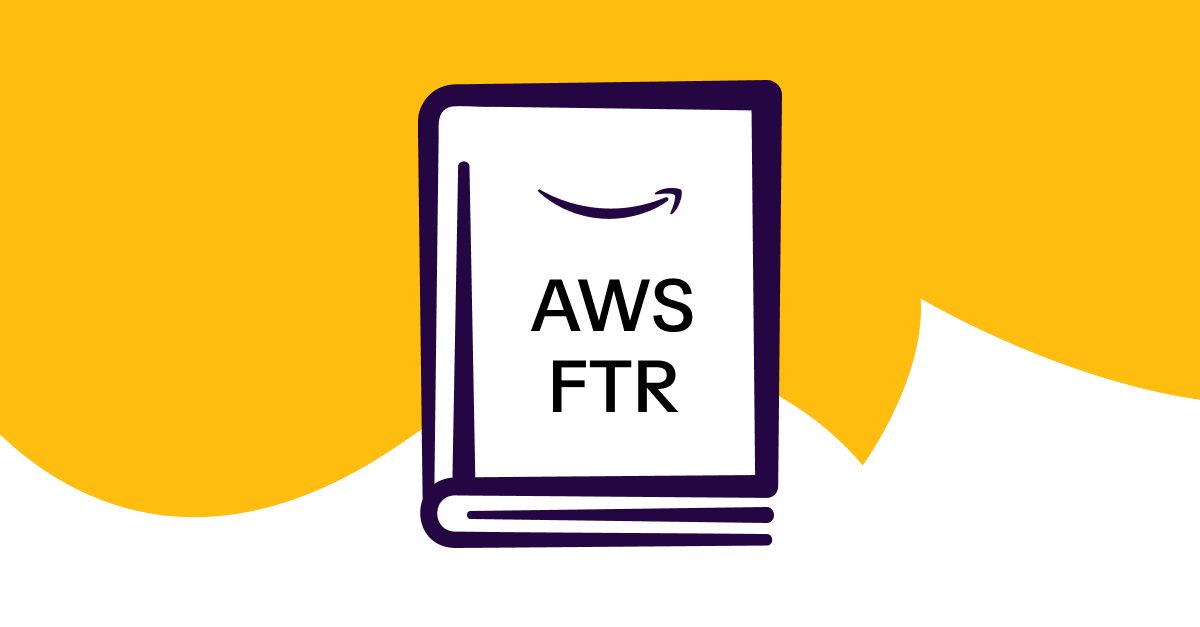
Launching software on AWS isn’t just about innovation, it’s about meeting cloud architecture standards that unlock growth. The AWS Foundational Technical Review (FTR) validates your solution across security, reliability, and operational excellence, and is essential for accessing co-sell programs, private offers, and AWS Marketplace benefits.
Whether you're listing a SaaS application or building for enterprise-scale delivery, the FTR helps ensure your solution meets AWS’s standards across,
✅ Security
✅ Reliability
✅ Operational Excellence
In this AWS FTR guide, we’ll cover what FTR is, key 2025 updates, the business value for ISVs, architectural requirements, and how to stay compliant and efficient post-review.
🔍 What is the AWS Foundational Technical Review?
The AWS FTR is a structured review that evaluates your software’s architecture against a subset of the AWS Well-Architected Framework. Specifically, it ensures your solution,
- Protects customer data with secure design and encryption practices
- Recovers gracefully from faults and failures
- Maintains reliable performance under varying workloads
- Is built and operated with repeatable, scalable processes
🎯 Six Reasons FTR Is a Game-Changer for ISVs
-
List on AWS Marketplace
While AWS FTR process is not required to list on AWS Marketplace, it is essential for unlocking key AWS Partner benefits.
Products that pass the FTR are tagged as “Reviewed by AWS,” which boosts buyer confidence and signals to AWS Sales Representatives that your solution is vetted and enterprise-ready. This increases the likelihood of co-sell support and field engagement.
With an FTR-approved listing, you can,
- Build trust with buyers through the “Reviewed by AWS” designation
- Qualify for Private Pricing Agreements (PPA)
- Offer flexible pricing models
- Receive greater attention from AWS co-sell teams
-
Reduce Business Risk
Identifying vulnerabilities and architectural gaps early helps prevent outages, performance issues, and compliance concerns down the road.
-
Fast-Track AWS Partner Validation
FTR is required for moving from Registered to Validated or Differentiated Partner status, positioning your company as a trusted AWS ISV.
-
Unlock Co-Sell and Partner Programs
From AWS ISV Accelerate to AWS Competency, FTR opens the door to programs that increase sales velocity and market trust.
-
Enhance Customer Confidence
FTR-reviewed products deliver better customer outcomes, leading to,
- Higher CSAT and NPS
- Stronger customer renewals
- More positive reviews and word-of-mouth
-
Qualify for AWS Funding
Eligible ISVs can access,
- AWS Activate credits
- Marketplace Seller Private Offers with custom pricing
- AWS Sales organization connection to drive joint sales opportunities with customers
⚙️ Key Updates to AWS FTR Checklist in 2025
AWS has rolled out improvements to make the AWS FTR process more efficient and accessible,
⏱️ Faster Reviews: With support from Amazon Bedrock, FTR approval times can now be reduced from weeks to just 30 minutes, provided submissions are complete and compliant.
🧱 FTR Waived with AWS Well-Architected Review: If you’ve completed an AWS-led Well-Architected Review within the last 12 months with no high-risk items, you can skip the FTR altogether.
📆 Longer Renewal Period: FTR certifications now last 3 years, up from 2, cutting down on review cycles and operational overhead.
📣 Discoverability Boost: FTR-approved solutions are prioritized in the AWS Partner Solution Finder and internal AWS sales tools, enhancing your visibility
🧭 Navigating the Architecture Requirement
To be eligible for key AWS Marketplace benefits (like PPA drawdown), your software must be deployed on AWS. As of May 1, 2025, all sellers must update architecture documentation in the AWS Marketplace Management Portal.
Hosting Patterns That Qualify,
- Application + Control Plane on AWS
- Migration/Replication workloads that run fully on AWS
📌 If your control plane is outside AWS or your product only connects to AWS (not hosted), you may still publish but won't qualify for co-sell incentives.
What You’ll Need to Submit,
- Clearly labeled architecture diagrams
- Grouped application and control plane components
- Logical deployment breakdown (seller, buyer, or third-party accounts)
.png?width=558&height=267&name=AWS%20Architectural%20Review%20-%20Flowchart%20(3).png)
🛠️ Post-FTR: Maintaining Compliance & Operational Efficiency
While the FTR focuses on architecture, many teams find the operational effort of keeping up with AWS policy changes, pricing updates, and listing requirements just as complex.
That’s where internal platforms or external tools like Suger can help, by:
- Monitor AWS policy changes and keep customers informed to update SaaS/AMI listing
- Syncing Marketplace activity with CRMs like Salesforce and HubSpot
- Tracking revenue, usage, and private offers post-listing
Note : Suger doesn’t perform the FTR review, but it helps ensure you stay compliant, visible, and operationally efficient after your listing goes live.
How to Get Started
To begin your AWS FTR journey,
- Identify the AWS Software Path or Services Path your solution belongs to
- Use the Well-Architected Tool to self-assess readiness
- Submit your FTR request via AWS Partner Central
- Collaborate with your Partner Solutions Architect for next steps
📌 Final Thoughts
AWS FTR isn’t just a checkbox, it’s a strategic advantage.
By aligning your solution with AWS’s best practices, you open doors to growth programs, sales support, and increased trust. Combine that with the right operational systems post-review, and your cloud GTM motion becomes scalable, secure, and future-ready.
🕒 Reminder to update AWS Architectural details in AWS Marketplace Management Portal (AMMP) by April 30, 2025
Need help with listing or managing your marketplace effectively to drive revenue and increase deal velocity?
👉 Reach out to Suger for a live demo on how you can achieve these without manual effort.